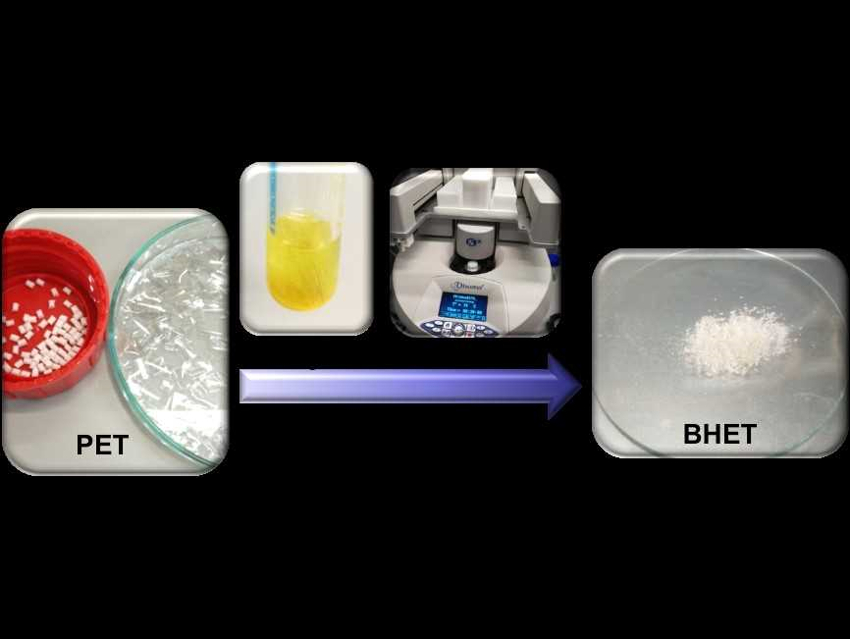Polyethylene terephthalate (PET) is a widely used plastic material. Its production exceeds 50 million tons per year. However, only a small fraction of this PET is recycled.
Victor Sans, University of Nottingham, UK, and Universitat Jaume I, Castellon, Spain, Imanol de Pedro, Universidad de Cantabria, Santander, Spain, Israel Cano, University of Nottingham, and colleagues have developed a method that combines microwave heating and Lewis acid catalysis for the efficient glycolysis of PET. The polymer is transformed into the monomer bis(2-hydroxyethyl)terephthalate (BHET). The system is based on the ionic liquid (dimim)2[Fe2Cl4(μ‐ox)] (dimim = 1,3-dimethylimidazolium, ox = oxalate), which has an oxalate-bridged binuclear iron (III) anion and an imidazolium-based cation. The ionic liquid acts as a catalyst for the degradation of PET.
The catalyst was found to be both active and selective with both conventional and microwave-assisted heating. Microwave heating results in considerable time- and energy-savings compared to conventional thermal heating. Waste PET bottles were transformed into BHET in three hours under these conditions, compared with 24 hours under thermal heating. The generated BHET can then be reused.
- An Oxalate-Bridged Binuclear Iron(III) Ionic Liquid for the Highly Efficient Glycolysis of Polyethylene Terephthalate under Microwave Irradiation,
Sergi Cot, Meike K. Leu, Alexis Kalamiotis, Georgios Dimitrakis, Victor Sans, Imanol de Pedro, Israel Cano,
ChemPlusChem 2019.
https://doi.org/10.1002/cplu.201900075




